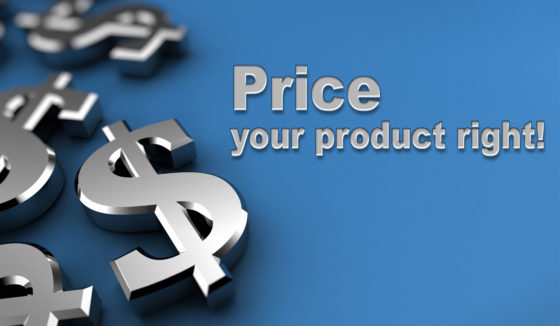How to Price Your Product Right
In his famous book entitled “The Strategy and Tactics of Pricing” Thomas Nagle says “Pricing is the moment of truth. All of marketing comes into focus in the pricing decision.” While product, place and promotion are elements of the marketing mix where your company is adding value for the consumer, the price is the way the consumer has of giving back that value to the company.
In order to succeed in today’s business environment, the pricing element of your marketing mix needs careful thought. If you price too low you lose out in terms of revenue and if you price too high you lose out in terms of turnover. You can no longer depend on a fixed price offered to the consumer based on traditional cost plus or competitor based pricing methods. You need to ensure that the price the buyer pays matches his or her perception of the value of your product.
So how do you ensure that the price of your product matches the consumer’s value perception? One approach would be to allow the prospective customer to test the product before he or she commits to paying. For example, Avidtrak offers a $20 credit to each potential customer free of any obligation to purchase the product. This ensures that the user gets to experience the product and test its utility before committing to buy. In this way, the customer is only required to pay to the company if he or she is fully satisfied with the product.
This approach to pricing moves way beyond the tradition AIDA model of Marketing in which the consumer moves from Awareness to Interest to Desire to Action. Now the consumer of the product engages with the firm to help set the right price for the right product. Potential consumers interact with the firms and tell them about product features they value and for which they are able to pay a premium. Firms alter their products and pricing to account for buyer preferences.
Another very interesting method of pricing is by using the Pay-What-You-Want (PWYW) approach. This approach can work well for products where the marginal cost of selling the product is very low. For example, if you sell your music online, then the incremental cost of selling the album is low. In this way, you can rapidly spread your composition online and the consumer would be paying the exact perceived value of your product.
The particular pricing strategy chosen by you will be unique to your business and circumstances. However, the basic idea of being responsive to the customer’s preferences and empowering her with the tools to make informed decisions will help your business flourish.


